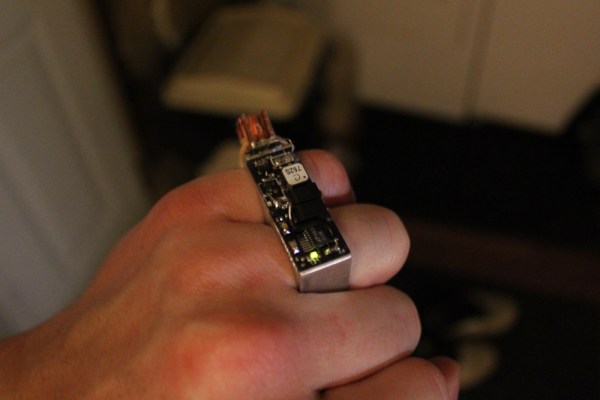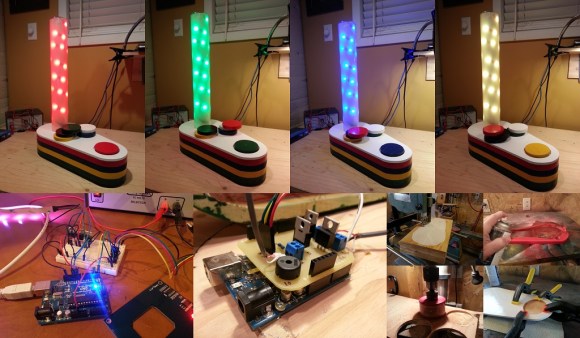[Sean] is by no means an electrical engineer, but when he discovered the magic of Peltier plates he knew he had to make a project with them. This is his Energy Harvesting Peltier Ring.
The effect he is harnessing is called the SeeBeck Effect — the process of generating electricity through temperature differentials. He has shown how peltier plates work to many people, and, as you can guess, most people think they are amazing (free energy wow!). Unfortunately, most peltier plates are rather large and bulky, so [Sean] decided he wanted to try to design something small enough that could fit on a ring. Just a proof of concept, to light a tiny SMD LED.
The tiny Peltier plate he found generates about 0.3V with a temperature differential of about 20C — not bad, but it won’t light up any standard LEDs at that voltage! He started looking into voltage steppers and discovered Linear Technology’s 3108 Ultralow Voltage Step-up converter and Power Manager — a surface mount chip capable of scaling 0.3V to 5V. The only problem? [Sean’s] never done surface mount soldering.
His first circuit was built on a prototyping board, and after it worked successfully, he designed a PCB using Fritzing. Another success! Prototyping complete, it was now time to try to downsize the PCB even more to fit on a ring. Realizing there was no way he was going to fit it on a single ring, he decided to make a double ring out of CNC machined aluminum. He made use of his school’s CNC shop and the ring came out great. It works too! The room has to be fairly cool for the LED to light, but [Sean] definitely proved his concept. Now to make it even smaller!

















